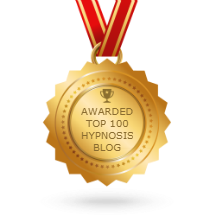by Hervé Boisdé
Many people have heard of celebrities or acquaintances who have given birth naturally or more comfortably by using a hypnosis technique called “hypnobirthing”. Many potential clients who call me for information about it mistakenly believe the hypnotherapist will be in the delivery room with the expectant mother, putting her into a trance and having her wake up after she’s painlessly given birth to a healthy newborn.
That’s really not how it works.
First of all, hypnosis is very similar to meditation. It’s a natural altered state that allows you to be more relaxed and focused, but you’re not unconscious or asleep. And the hypnotist doesn’t need to be in the delivery room because hypnosis is something that can be taught to the client, and self-hypnosis is all the mother needs to manage pain and stress, be more comfortable, and actually have a shorter labor.
The mind and the body are connected. Medical science has confirmed this and over 80% of doctors’ visits are due to stress-related issues. Stress and anxiety are caused by fear. We can manage fear with hypnotherapy. Society and popular culture have filled expectant mothers with fear about giving birth. All of the movies and TV shows with dramatically chaotic scenes of a woman in agony and war stories from otherwise well-intentioned friends or relatives about their personal experiences with childbirth can naturally create feelings of dread in a soon-to-be mother. Hypnosis allows you to access the subconscious mind, where fears reside, and replace negative expectations about childbirth with more positive ones.
Pain is also a construct of the mind. It’s possible to do surgery without anesthesia, simply by using hypnosis. According to the Washington Post: “hypnosurgery has been used in Europe for minimally invasive procedures, such as hernia repair, lumpectomies, biopsies and some mastectomies in breast cancers for several decades. But in the United States, hospitals and doctors have shied away from the therapy.” When I was doing my hypnotherapy training, our instructor showed us a video of himself getting a crown replacement at the dentist without novocaine. He used self-hypnosis to imagine himself at the beach, comfortable and pain-free, throughout the procedure, while his wife recorded it on video. Needless to say, I was pretty impressed.
So what are the benefits of hypnobirthing?
Natural childbirth - women can give birth without pain medication or minimize the use of drugs during or after childbirth
A shorter and more comfortable labor - hypnobirthing practitioners report that using hypnosis can substantially shorten the amount of time the mother is in labor and deliveries are easier with fewer complications
A deeper connection with the baby - many women can use hypnosis to form a closer bond with the unborn child which may result in a more peaceful newborn that nurses more easily
Postpartum benefits - hypnobirthing mothers tend to feel better after giving birth, recover more quickly and have lasting mood benefits even after leaving the hospital

